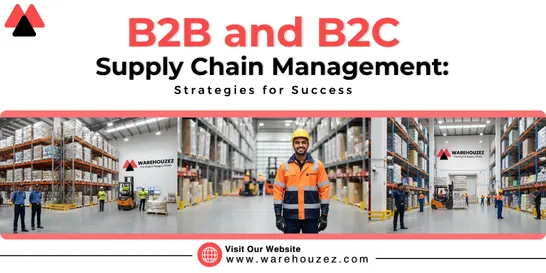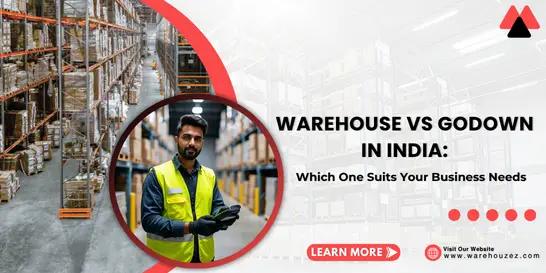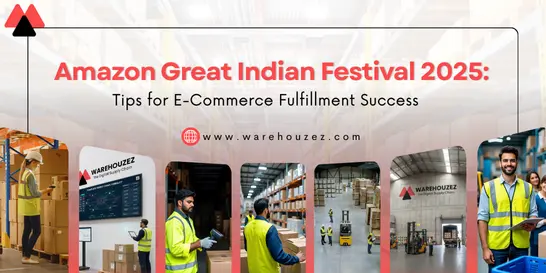3PL vs. In-House Fulfillment: What's Better for Your D2C Brand?
3PL vs. In-House Fulfillment: What's Better for Your D2C Brand?
What really decides the success of a D2C brand? Well, it’s not only the product quality or sales-marketing but also how smoothly orders reach customers. One late delivery or misplaced package can certainly hurt brand trust.
That’s exactly where the role of fulfillment comes in. It’s indeed the backbone any D2C business. But as your brand grows, you face a big question: should you manage fulfillment in-house or work with a 3PL fulfillment partner?
In this blog post, we will explore both options, their pros and potential challenges, and help you decide which suits your business better. So, let's get started!
Understanding D2C Fulfillment
D2C fulfillment involves storing, packing, and delivering products straight to customers without intermediaries. Unlike traditional retail models, here, brands manage the entire order journey.
Here’s why accurate and on-time fulfillment plays a fundamental role:
- Customers expect quick and reliable deliveries.
- A hassle-free D2C order experience encourages customer loyalty and repeat purchases.
- Poor fulfillment can cause returns, complaints, and lost revenue.
In short, D2C fulfillment goes beyond logistics, it defines the customer experience.
Exploring the Types of Fulfillment Models for D2C Brands
D2C brands often decide between two routes: managing fulfillment themselves or outsourcing to a 3PL provider. Let’s break them down.
In-House Fulfillment : This means your brand controls everything. You store products in your own warehouse facility, manage staff, and handle packing and shipping.
Pros of Self Fulfillment:
- Full control over operations such as inventory storage, picking, packaging, shipping, and reverse logistics.
- Easier to maintain a more branded, personal touch.
- Best for startups with small order volumes.
Cons and Challenges of Self Fulfillment:
- High costs for rent, labor, and equipment.
- Difficult to scale when orders grow.
- Requires time and management focus.
3PL Fulfillment :
With 3PL warehousing and logistics, you outsource fulfillment to experts. A 3PL provider takes care of everything from receiving and inventory storage to QC, order processing, packing, shipping, and reverse logistics.
Pros of 3PL Fulfillment:
- Saves time and reduces overhead.
- Access to advanced D2C warehouses with tech integration.
- Scales easily during festive sales or sudden demand spikes.
- Improves delivery speed with multiple D2C fulfillment centers.
Cons and Challenges of 3PL Fulfillment:
- Less direct control over daily operations.
- Choosing the wrong partner can harm service quality.
Pros and Cons of 3PL vs. In-House Fulfillment
Both fulfillment models have their strengths as well as limitations. Let’s compare them across different factors.
Cost: In-house fulfillment involves high setup and fixed costs, while 3PL works on a flexible, pay-as-you-go model that reduces upfront expenses.
Control: With self fulfillment, brands maintain complete control over processes, packaging, and staff. In contrast, 3PL limits direct control but brings professional expertise.
Scalability: Scaling in-house requires more warehouses, labor, and equipment, which is challenging. 3PL makes scaling easier since providers already have established infrastructure.
Technology: In-house operations require investment in tech tools like barcode scanners, RFID, IMS, and WMS. Most 3PL companies already provide advanced systems with real-time tracking.
Speed: In-house setups often rely on a single location, limiting reach. 3PL partners often have nationwide network of warehouses to reduce delivery times.
Customer Experience: In-house can feel personalized but struggles at scale. 3PLs ensures fast, consistent, and reliable service, which, in turn, builds trust.
What’s Better for Your D2C Brand?
So, which model wins? The answer clearly depends on your brand’s stage and operational goals.
When In-House Works Best:
- Early-stage startups with low order volume.
- Brands that want full control over unboxing.
- Businesses with niche or custom packaging needs.
When 3PL Fulfillment is the Better Option:
- Growing D2C brands with rising orders.
- Companies looking to expand into new regions.
- Brands wanting faster deliveries with reduced shipping costs.
- Businesses that want to focus on sales, not warehouse operations.
The choice comes down to growth readiness. If your brand is smaller and manageable, in-house fulfillment offers greater control. But once orders multiply and customer expectations rise, a 3PL fulfillment partner ensures overall efficiency and long-term scalability.
Choosing the Right 3PL Fulfillment Partner: A Checklist
It's absolutely true that not all 3PL partners are similar. Choosing wisely can transform your D2C brand’s customer experience. Here’s what to look for:
1. Strategic Warehouse Locations : Ensure the 3PL provider has D2C warehouses near major markets and distribution networks. This reduces delivery times and costs.
2. Technology Integration : Look for partners offering WMS (Warehouse Management Systems) along with real-time inventory and order tracking. Also, seamless integration with your e-commerce platform is a must.
3. Scalability and Flexibility : Ask the following questions:
- Can the 3PL provider handle festive season spikes?
- Do they offer flexible warehouse storage options as your needs change?
4. Order Accuracy and Speed :
- Ask about their order accuracy rate.
- A reliable 3PL should have a proven record of error-free and fast D2C order deliveries.
5. Customer Service : Customer support should be proactive and available round-the-clock. Transparent communication builds trust.
6. Cost Transparency : It ensures their pricing model is clear with no hidden fees. Don't forget to compare their service value against costs saved in-house.
Choosing a 3PL fulfillment partner isn’t just about outsourcing logistics and fulfillment. It’s about finding a growth partner for your D2C brand.
Concluding Remarks
Fulfillment can undoubtedly either make or break any D2C brand. While in-house fulfillment works well for startups with limited orders, it quickly becomes costly and complex as you scale.
A 3PL fulfillment partner brings flexibility, speed, and tech-driven efficiency. It helps D2C brands expand faster while keeping customers satisfied.
So, whether you’re an emerging startup or a scaling D2C brand, the right choice lies in aligning your fulfillment model with your growth goals. For most brands, that means moving from in-house to a trusted 3PL partner.
FAQs
1. What is the difference between 3PL and in-house fulfillment?
3PL means outsourcing fulfillment to an external company, while in-house fulfillment is managing operations within your own facility.
2. Is 3PL fulfillment more cost-effective for D2C brands?
Yes, why not, especially, as your order volumes grow. It reduces infrastructure and labor costs while improving delivery speed.
3. Can small D2C startups use 3PL fulfillment?
Yes, many 3PLs offer cost-effective and scalable solutions for startups. However, very small brands with low volume may find in-house cheaper initially.
4. How do I know if my D2C brand is ready for 3PL?
If you’re struggling with high shipping costs, lost sales, late deliveries, or scaling challenges, it’s time to consider a 3PL.
5. Do 3PLs support worldwide shipping for D2C brands?
Many 3PL providers offer both local and international fulfillment services, making cross-border expansion even easier.



